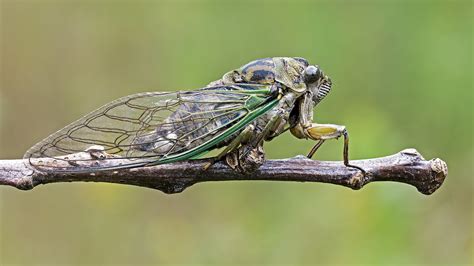In mere weeks, one of the most spectacular natural phenomena will begin to take place in the Eastern part of the US – the synchronized emergence of trillions of periodical cicadas (Magicicada spp.). These unusual insects have spent the past 17 years feeding underground, and once the soil temperature reaches about 64 degrees, they will head for the surface. Once there, they will fill the trees and the sound of their mating songs will fill the air. Their loud rasping call can be up to 80-100 decibels, about as loud as a lawnmower.

For approximately 2-4 weeks, they will court, mate, and lay eggs, setting the stage for the next big emergence, which won’t take place until 2038. This can be quite an inconvenience to residents in the areas in which they emerge, but the sheer numbers of these large insects will provide a once-in-a-lifetime feast for many animals, and the decomposition of their bodies will deliver a huge dose of fertilizer to plants and trees. To Mother Nature, this is a very beneficial occurrence!
The name of this particular brood is Brood X, because it is the tenth brood to be studied by entomologists. There are 15 and Brood X has the greatest range and concentration of them all, so it’s a big deal! Brood X spans 15 states from Georgia to New York and West to the Mississippi river.
Periodical cicadas are a bit different from the cicadas we have here in Texas, which are known as annual cicadas. Their life-cycles range from 1 to 9 years and individuals emerge every year, but they are not synchronized. They are typically green with black and brown markings and green wing veins. Periodical cicadas emerge together either every 13 or 17 years, depending on the species. They are quite striking with black bodies, red eyes, and orange wing veins.
Why do they all emerge together? Scientists believe this is a survival strategy known as predator satiation. The idea is to be present in such great numbers, that even if all the predators fill their bellies with cicadas, there will still be enough present to reproduce and perpetuate the species. Why do they take 17 years? This is one of those great mysteries, but the leading theory is that they are large insects with a diet poor in nutrients, so it takes them a long time to develop. Are these insects harmful? Not at all. They do not bite and they are not toxic at all. In fact, some find them to be quite tasty!

Many confuse these harmless insects with locusts, which are actually the migratory form of grasshoppers. Unlike grasshoppers, which have chewing mouthparts, cicadas have sucking mouthparts and they slowly suck the sap from tree roots underground, causing no real damage to trees. They do not cause damage to crops or garden plants.
My advice to anyone that lives in or plans to visit the East coast in the months of May and June: Enjoy the show! With climate change and other factors at play, we do not know how many more times it will happen.


